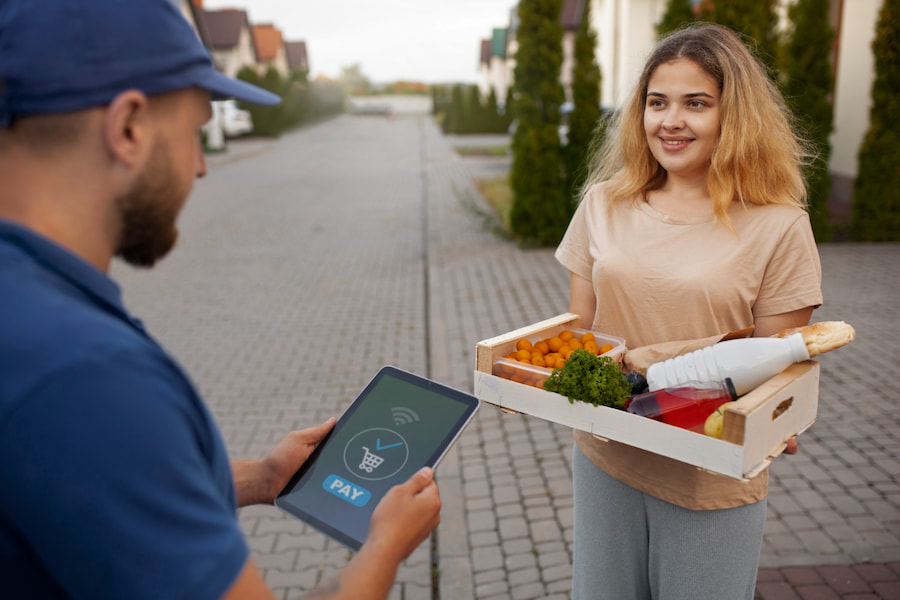The rise of food delivery services has undoubtedly transformed the restaurant industry in recent years. Ordering meals from the comfort of one’s home or office has become incredibly convenient. Unsurprisingly, food delivery places have become famous for many consumers. While this convenience has benefits, it also raises questions about how food delivery impacts traditional restaurants.
We will see how food delivery has influenced the restaurant industry, including the challenges and opportunities it presents for both restaurants and consumers. We will also examine the impact of food delivery on the overall dining experience and how it has changed consumer behavior in the restaurant industry.
Increased Competition
One of the largest impacts of food delivery on restaurants is increased competition. As more and more food delivery platforms enter the market, restaurants find themselves vying for the attention of online customers. This intensified competition can make it challenging for traditional restaurants to stand out and attract diners to their physical locations. In addition, restaurants may be forced to lower prices or offer discounts to remain competitive, impacting their profitability.
Adaptation to New Technology
Many restaurants have had to adapt to new technology to keep up with the fast-paced digital landscape. This has led to the implementation of online ordering systems, mobile-friendly websites, and integration with third-party food delivery apps. Although these changes can help restaurants reach a wider audience, they also require significant investments in technology and staff training. However, the benefits of these adaptations can be well worth the investment, allowing restaurants to stay competitive and provide a more convenient and seamless experience for their customers.
Changes in Menu Offerings
The market for food delivery is expanding rapidly, and some restaurants have started to change their menu offerings. To ensure that the food travels well and maintains its quality during delivery, items such as pizzas, burgers, and specific Asian cuisines have become more prominent on restaurant menus. While this shift can be beneficial for food delivery services, it can also have an impact on the diversity of food options available at traditional sit-down restaurants.
Cost Considerations
Operating a food delivery service can be expensive due to various costs, such as fees charged by third-party delivery platforms, the expenses related to packaging, and additional staffing needed for order preparation and delivery. For restaurants, it can be challenging to strike a balance between offering delivery services and maintaining profitability.
Dine-In Experience vs Delivery
Food delivery has revolutionized the restaurant industry and prompted questions about the traditional dine-in restaurant experience. While some diners prefer the convenience of eating at home, others value the ambiance, social interaction, and personalized service a traditional restaurant offers. To remain successful in this changing landscape, restaurants must balance catering to both types of customers and providing a seamless experience to satisfy their diverse needs.

Online Reviews and Ratings
In addition to maintaining high ratings, restaurants can leverage online reviews to identify areas of improvement and address customer complaints. It is crucial to interact with customers and take their feedback into account to improve their experience. It is important to actively engage with customers and address their concerns to enhance their satisfaction. Restaurants can build a positive reputation and establish loyal customers. It’s clear that in today’s digital age, monitoring and managing online reviews is crucial for any restaurant’s success.
Customer Loyalty
To stand out, restaurants must prioritize top-notch food and exceptional customer service. Offering unique menu items, personalized promotions, and Creating a seamless ordering experience can foster customer loyalty.
Pricing and Profit Margins
Offering food delivery services often requires restaurants to adjust their pricing to cover the costs associated with delivery and third-party platform fees. Striking a balance between competitive pricing and maintaining healthy profit margins is a constant concern for restaurant owners.
Geographic Reach
Food delivery has extended the geographic reach of many restaurants. Customers outside the immediate vicinity can now enjoy their favorite meals from delivery restaurants. This expanded reach can be a double-edged sword, as it can lead to increased demand and potential logistical challenges.
Challenges in Quality Control
Maintaining the quality of food during delivery can be a significant challenge. Ensuring that food arrives hot, fresh, and in optimal condition is crucial for customer satisfaction. Restaurants must invest in suitable packaging and delivery systems to meet these expectations.
Conclusion
The impact of food delivery on restaurants is multifaceted. While it offers new opportunities for revenue and customer reach, it also presents challenges in competition, cost management, and maintaining the quality of the dining experience. As the restaurant industry continues to evolve, finding the right balance between traditional dine-in service and food delivery will be essential for restaurants to thrive in this changing landscape. Ultimately, restaurants that can adapt to the demands of the food delivery era while retaining the essence of their unique dining experiences will likely succeed in this evolving industry.


